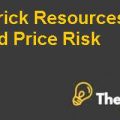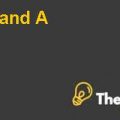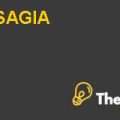
Introduction
The paper attempts to perform an overview and analysis of the stocks and the bonds of the multinational company, Procter and Gamble. The liquidity position of the company standing at the end of the year 2015 has also been analyzed. Furthermore, the spreads for the different classes of the bonds have also been calculated by compared them with the yield of the treasury securities. The required rate of return for Procter and Gamble investors has also been calculated and the expected growth rate that the prospective investors of the company could expect from this has also been calculated.
Lastly, recommendations have also been made for the prospective investors when they are representing a sovereign wealth fund and the pension fund. The recommendations might also vary depending on the risk profile of the investors and how much risk they are willing to take. Some would be risk averse and some would be risk taker investors.All the calculations have been performed in the excel spreadsheet and the references have been added.
Liquidity Situation
The liquidity position of the company has been analyzed by calculating a number of ratios. The three important liquidity ratios for the company, which are the acid test ratio, current ratio and the cash ratio, have been calculated for the past three years which are 2013, 2014 and 2015. The trend of these ratios over the past three years could be seen in the table below:
|
LIQUIDITY ANALYSIS |
|||
| Year End |
Jun-13 |
Jun-14 |
Jun-15 |
| Current Assets |
23990000 |
31617000 |
29646000 |
| Current Liabilities |
30037000 |
33726000 |
29790000 |
| Sales |
80116000 |
80510000 |
76279000 |
| Inventory |
6909000 |
6759000 |
5454000 |
| Cash |
6845000 |
8558000 |
5947000 |
| Cash Ratio |
0.23 |
0.25 |
0.20 |
| Current Ratio |
0.80 |
0.94 |
1.00 |
| Quick Ratio |
0.57 |
0.74 |
0.81 |
The liquidity position of Procter and Gamble is weak and it shows that the company might have problems in paying off its outstanding obligations as the fall due. This could be seen from the current liabilities of the company. For the past three years the current liabilities for Procter and Gamble have been much higher as compared to the total current assets of the company including the ending inventory of the company.
First of all if we look at the current ratio for the company, then it could be seen that this ratio has been less than 1 over the three years, which shows that the company is facing liquidity problems and it does not have enough cash to finance it short term obligations. Although, this ratio shows an increasing trend over the years, however, the current liquidity situation for Procter and Gamble is worse and this is an alarming situation for the management. In the same way, the quick ratio for the company is increasing but it’s weak currently. This shows that the company does not have enough liquid assets after excluding inventory to finance its short-term obligations if they fall due.
Lastly, we look at the cash ratio for the company which shows the amount of the cash available with the company to pay for the outstanding short term obligations, then again we can see that this ratio is worsening and weak. Only around 20% of the short term liabilities could be repaid from the cash available with the company. This is a serious problem for the company and management needs to focus on short-term cash generation for the business.
Overview of Company Bonds
The latest overview for the corporate bonds of Procter and Gamble is shown in the table below:
|
BOND OVERVIEW |
||
| Credit rating by Morning Star |
AA |
|
| Outstanding Amount |
119.1 |
Billion |
| Issuer type |
Corporate |
|
| Issuer Domicile |
United States |
|
| Debt/ Assets Ratio |
23.44% |
|
| Sector |
Consumer Defense |
|
The total debt held by the company at the end of the year 2015, is 30.35 million and if we take the weighted average of all the interest rates of the company then the average interest rate for the company becomes 2.05%. Based on this average interest rate for the company, the total interest paid by the company on its bonds is around 623 million. The company has bonds in issuance currently with short term and long-term maturities ranging from 1 year to around 20 years. In all the cases, the coupon rate that is being paid by the company on these bonds is much higher as compared to the yield to maturity of these bonds. All the bonds that are currently issued by the company are not callable and the type of the coupon that is paid upon these bonds is fixed.....................













